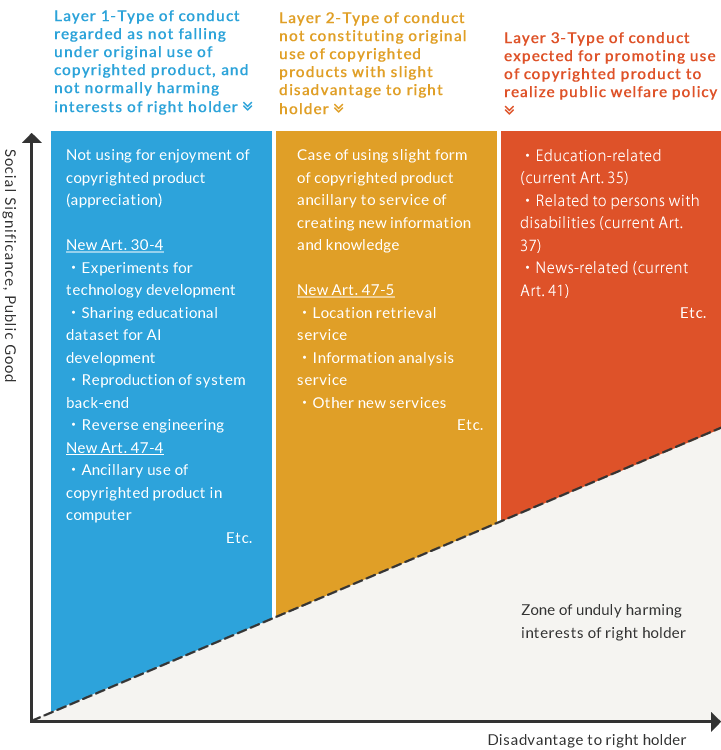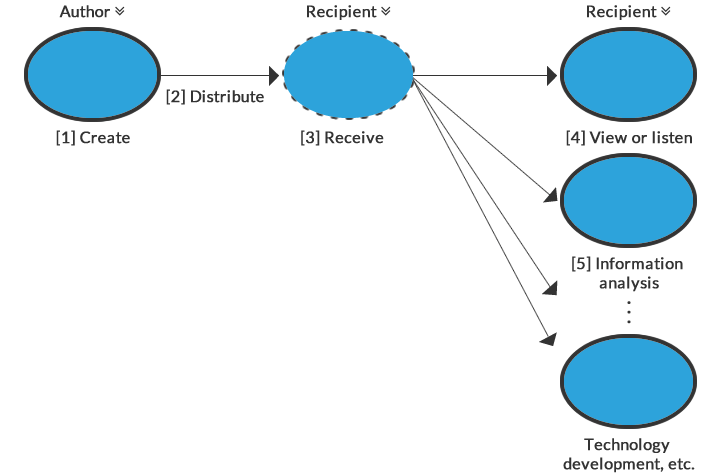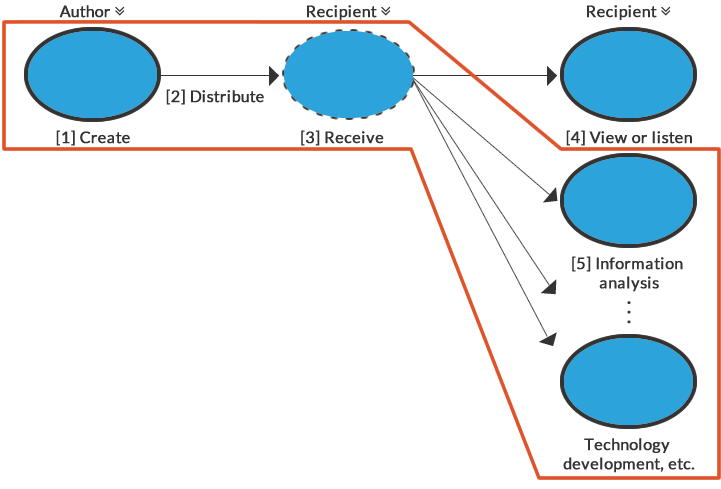Evolving Paradise for Machine Learning—Revisions to the Copyright Act Further Accelerate Development of Japan’s AI
Next, when you classify the provisions of the revised law by these 3 layers, it looks like this.

Prepared based on the 2017 report (page 40), “Diagram of three layers of prescribed limitation of rights according to the degree of potential harm to the right holder”
Of these layers, since layer 1 is “the type of action that does not fall under an original use of a
copyrighted product and can be regarded as not usually harming the interest of the right holder”, the revised
Article 30-4 I have continuously explained in this blog belongs to the prescribed limitation of right in layer
1.
What then are the concrete meanings of the “original use of a copyrighted product” and the “interest
of the right holder” in layer 1?
Structure of the Copyright Act
1. What are the “economic value of the copyrighted product” and the “interest of the right holder” on
which the Copyright Act is premised?
To begin with, where does the economic value of the copyrighted product lie?
In other words, what do people expect of the copyrighted product in exchange for the money paid?
First, the viewer or listener of the copyrighted product pays money to enjoy viewing it or listening to it. In
short, and needless to say, the consideration paid by the viewer or listener of the copyrighted
product in exchange for the satisfaction of viewing it or listening to it corresponds to the
economic value of the copyrighted product. However, the copyrighted product actually has economic value beyond
the satisfaction it affords the viewer or listener of the copyrighted product.
For example, the consideration paid by the user of a copyrighted product for various uses, such as information
analysis, technology development, back-end for telecommunications equipment, AI development, and reverse
engineering of software to ensure cybersecurity software, is also considered to constitute the economic value
of the copyrighted product.
However, among these various economic values of the copyrighted product, the only portion that the Copyright
Act is attempting to protect is the consideration paid by the viewer or listener of the copyrighted product in
exchange for the satisfaction of viewing or listening to the copyrighted product.
On this point, the 2017 report (page 41) indicates that “the consideration the viewer or listener pays to view
or listen to the copyrighted product while expecting to get the benefit of fulfilled intellectual and
emotional needs from the enjoyment of ideas and emotions expressed in the copyrighted product lays the
foundation for the economic value of the copyrighted product”.
In short, the “original use of the copyrighted product” refers to the “enjoyment of ideas and emotions
expressed in the copyrighted product”; and the “interest of the right holder” refers to the “consideration
paid by the viewer or listener to view or listen to [the copyrighted product]”.
2. What is a copyright?
The Copyright Act grants the copyright holder copyrights, more specifically such rights as the right of
reproduction, the right of performance, and the right of public transmission, so that the copyright holder is
given the economic value of the copyrighted product. This can be expressed in other words as the right of the
copyright holder to control the distribution process of transmission of the copyrighted product from the
copyright holder to the recipient.
The delivery of copyrighted products created by the copyright holder to recipients in remote locations (or
even persons nearby) requires various acts of distribution, such as reproduction, performance, and public
transmission. As such, a copyright is the right of the copyright holder to control those acts of distribution
3. Acts that are subject to copyrights under the Copyright Act
A simple diagram illustrating this looks like this.

First, in item 1 above, the author creates the copyrighted product. After that, in item 2 above, the
copyrighted product is distributed, following which the copyrighted product is received by the recipient in
item 3. Finally, in item 4, the recipient receives satisfaction by viewing or listening to such copyrighted
product.
The acts of distribution (reproduction, performance, etc.) protected by the Copyright Act, in other words the
acts of distribution (reproduction, performance, etc.) for the “original use of the copyrighted product”, mean
the “acts of distribution (reproduction, performance, etc.) for viewing or listening (the red-framed diagram
above).
4. Acts that are not subject to copyright under the Copyright Act
On the other hand, copyrighted products have economic value beyond the satisfaction derived from viewing or
listening to the copyrighted product which I have mentioned above.

However, these economic values are not something the Copyright Act is intended for.
Therefore, “satisfaction from viewing or listening to the copyrighted product” is not intended [under the
Copyright Act], meaning that acts of distribution (reproduction, performance, etc.) not for the original use
of the copyrighted product are not the subject to protection under the Copyright Act. In short, the Copyright
Act does not protect the acts depicted in the blue diagram below.

This kind of thinking underlies the type of action that does not fall under an original use of a copyrighted product and can be regarded as not usually harming the interest of the right holder (layer 1) in the structure of the prescribed limitation on rights.
Summary
To make a long story short, the problem was specifically to what kind of cases the proviso of new
Article 30-4 applies; namely “this shall not, however, apply to the cases where in view of the type of the
work and the use and manner of the use, the interests of the copyright holder are unduly harmed”.
In that proviso, the phrase “interests of the copyright holder” is used.
Judging from the structure of the Copyright Act explained above and the purport of the prescribed limitation
on rights in layer 1, the phrase “interests of the copyright holder” means ensuring the opportunity to receive
the consideration the recipient of the copyrighted product pays in exchange for the satisfaction from viewing
or listening to it.
In other words, the use by a “type, purpose, or circumstance” that “a recipient of such copyrighted
product satisfies by viewing or listening to it” is the use covered by this proviso.
Since new Article 30-4 is formed by typifying “if the use is not intended for own enjoyment or for enjoyment
of others of ideas or emotions expressed in the work” in the first place, then, as a general principle, the
proviso will not apply if the requirements in the main text are satisfied.
As a case to which the proviso applies as an exception, I can think of one example: a case
involving the sale of a simply digitalized dataset of all the comics of a specific author by
calling it the “training dataset for generation model for a certain style of character”.
Since this case definitely involves a dataset that could be used as a training dataset for trained model
generation (however, you must affix a label yourself), it falls under “information analysis” under Article
30-4(ii). However, it is also possible that such data can be enjoyed as is by viewing and listening to it. As
such, I believe it would fall under the proviso.
Summary of Major Points
The act of using the copyrighted product of another for machine learning, when done by the same business operator all the way through to the model generation, is lawful under the current Copyright Article 47-7 However, the current Article 47-7 does not apply to (i) an act of preparing a training dataset for another person to generate a model which is sold to an unspecified number of third parties or disclosed on the web, instead of generating a model by yourself, (ii) an act of a business operator, who created a training dataset to generate a model on its own and generated a model, selling the training dataset used in the model generation to an unspecified large number of third parties and making it available on the Web at no charge, or (iii) an act of sharing of training dataset among a consortium consisting of specific business operators; each of which is a copyright violation. Each of the three patterns above will become lawful under the Article 30-4 of the revised Copyright Act, which comes into effect on January 1, 2019. I believe that a large practical problem is what kind of cases are covered by the proviso in new Article 30-4. The proviso does not apply to the use unless it is by a “type, purpose, or circumstance” that “a recipient of such copyrighted product satisfies by viewing or listening to it”. Therefore, I believe the proviso will not apply, in principle, if all requirements in the main text are satisfied. (Taichi Kakinuma, attorney-at-law)
